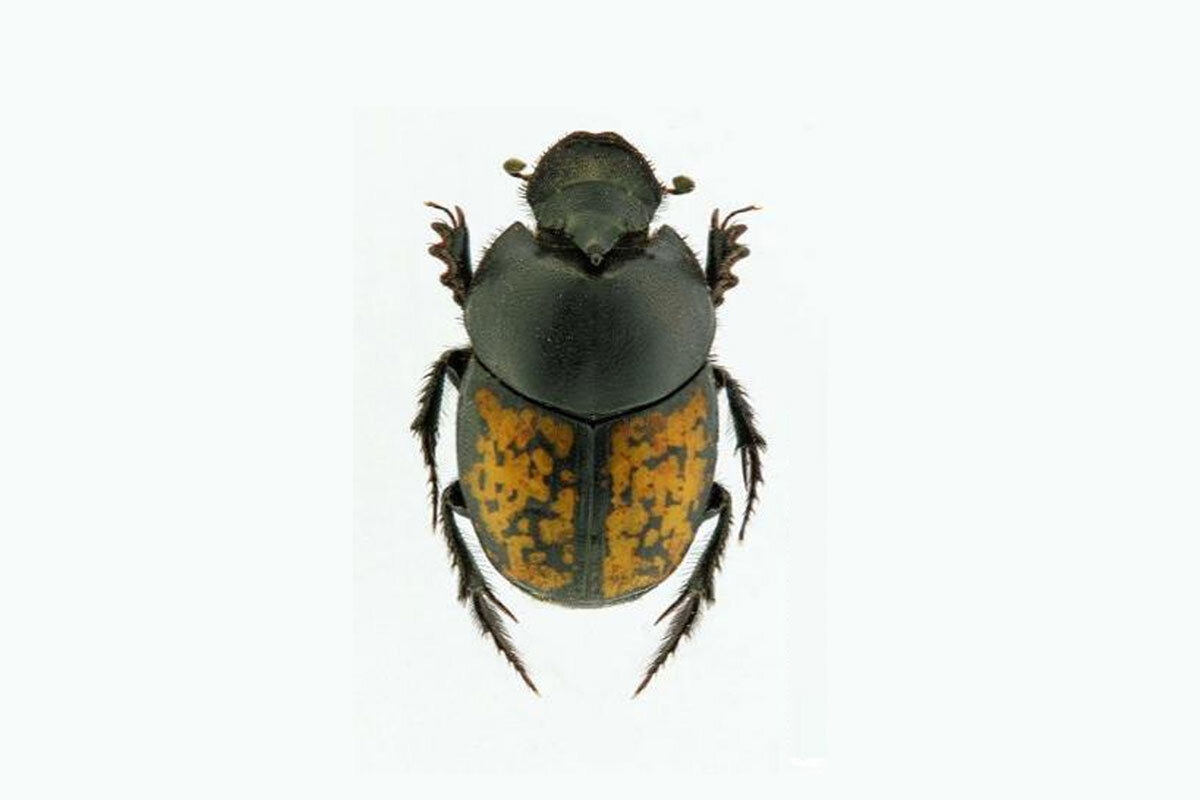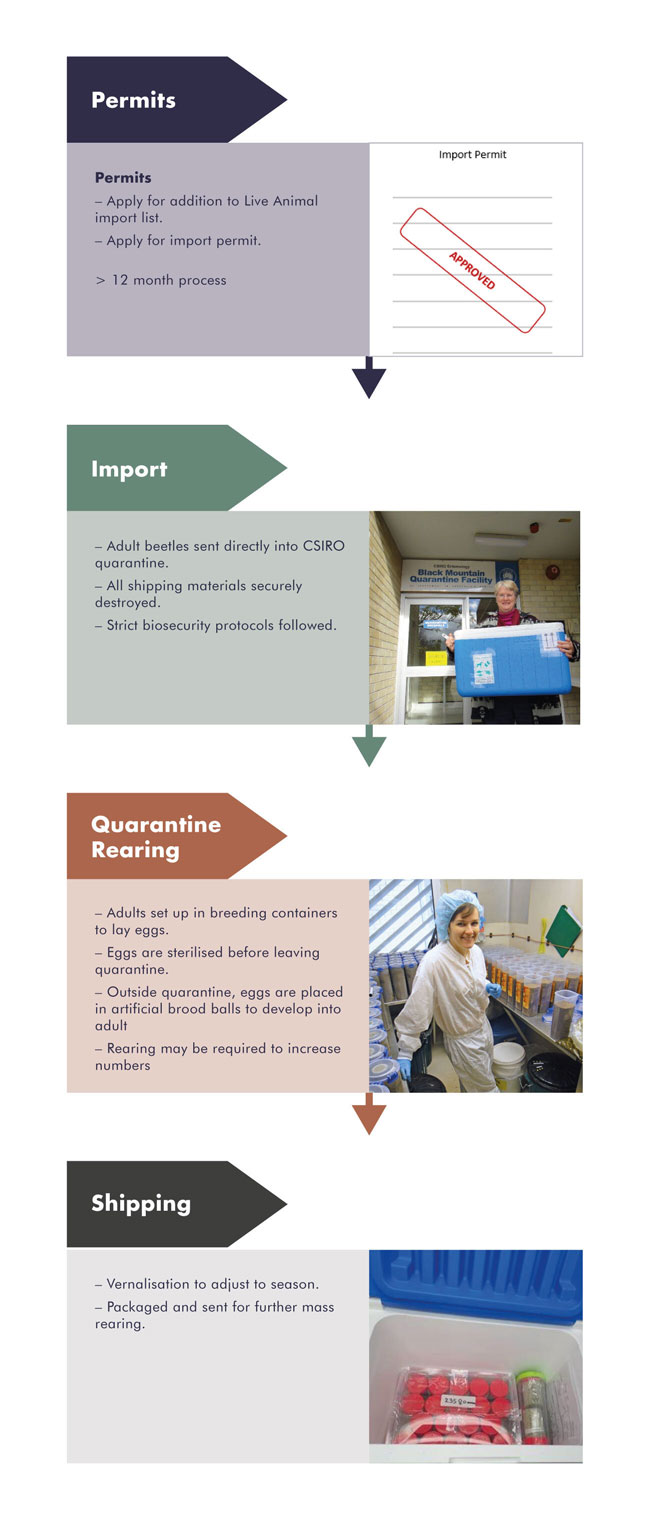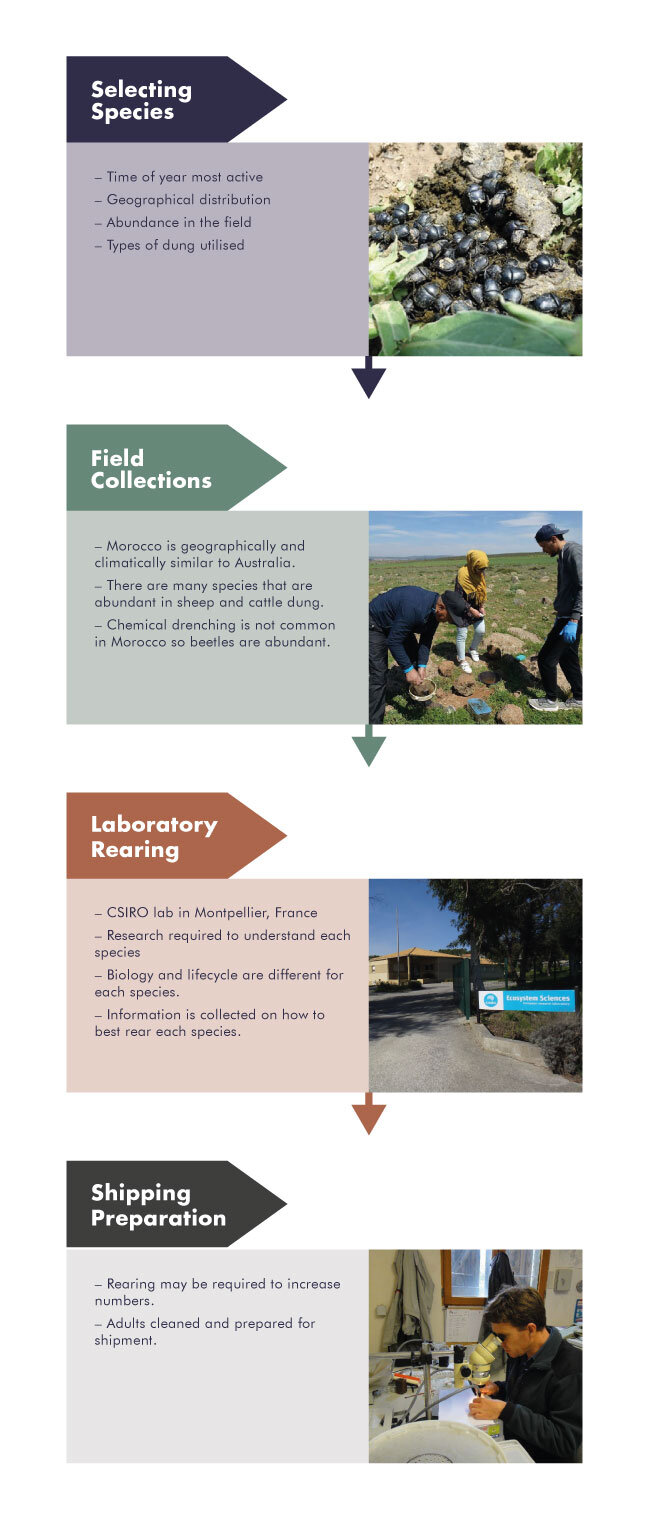
Onthophagus andalusicus is the second dung beetle species that will be introduced into Australia as part of DBEE program. CSIRO are waiting on the final import permit and if the permit is granted will begin importing by early-2020.
Onthophagus marginalis subsp. andalusicus (we’ll just call it O. andalusicus) is a medium size 6–12 mm long, with yellow to orange wing covers (elytra) with irregular black markings. Males have a short horn. It is native to Northern Africa (Morocco, Algeria, Tunisia) and south-western Europe (Portugal, Spain, Italy, Malta).
O. andalusicus was selected as it is another spring-active species which is abundant in its native range and uses both sheep and cattle manure. Like O. vacca, O. andalusicus is a tunnelling beetle that can rapidly bury dung into the soil profile.
In its native range, it is active during spring, from late winter to early summer. It should help fill the southern Australian early spring gap. It is a common species in Morocco, where it can dominate dung beetle communities in spring from February to June (1). At some sites, it was so abundant that it represented more than 70% of dung beetles present and 65.7% of the biomass (1). In a Moroccan study, O. andalusicus was present at 37.5% of sites sampled in Morocco (2). In Tunisia, it was present for 20% of the year over a two-year study (3).
As for other Onthophagus species, O. andalusicus makes a main tunnel under a dung pad, which branches in secondary tunnels leading to brood chambers. Dung is used for food or nesting. The larvae feed on the dung within the brood chambers and metamorphose into adults. These adults will feed for a few weeks and then remain hidden in the soil until the following spring, when they will be ready to emerge and reproduce.
References
(1) Janati-Idrissi, A., Kadir, N. and Lumaret, J.P. (1999) Le partage du temps et de l’espace entre les guildes de coléoptères coprophages dans le Moyen-Atlas. Annales de la Société Entomologique Française. 35:suppl.:213-221
(2) Labidi, I., Errouissi, F. and Nouira, S. (2012) Spatial and temporal variation in species composition, diversity, and structure of Mediterraneen dung beetles assemblages (Coleoptera: Scarabaeidae) across a bioclimatic gradient. Environmental Entomology. 41, 785-801
(3) Errouissi, F., Haloti, S., Jay-Robert, P., Janati-Idrissi, A., and Lumaret, J.-P. (2004). Effects of the attractiveness for dung beetles of dung pat origin and size along a climatic gradient. Environmental Entomology 33, pp 45-53.

Selecting new beetles
Importation of new dung beetle species is necessary to fill seasonal and geographic gaps in beetle activity in Australia. One major gap in southern Australia occurs in late winter and early spring. Filling this gap is one of the main goals of DBEE.
The selection process is key to the successful importation of new species. First, using climate matching, climatically suitable regions needed to be identified that are similar to the Australian regions targetted. Second, dung beetles present in the suitable regions were assessed based on their seasonal activity, their abundance and the type of dung they use. Only tunneler or roller beetles were considered. A short list was then populated, with the help of Australian and international dung beetle experts.
Morocco has so far been the focus of the importation program. Morocco has hot dry summers and cool wet winters. Annual rainfall is 500 – 1200 mm but drought is common (sound familiar?). Morocco also has mountains, providing a wide climatic range. Morocco has a large range of dung beetles that breed in sheep and cattle dung in large numbers and producers use little chemical drenching compared to other countries.
‘Why can’t we just throw a few dung beetles in a suitcase?’
Importing process
Australia’s biosecurity laws are some of the strictest in the world and they are there to protect our agricultural and natural environments. Knowingly bringing prohibited material including dung beetles into Australia can result in fines of thousands of dollars and jail sentences.
The approval process for bringing new species into Australia takes over 12 months and requires approval from two Australian Government departments: the Department of Environment and the Department of Agriculture.
The Live Animal Import List specifies animal species that can be brought into Australia and each new species of dung beetle needs to be added to it. Although the DBEE project is only planning to import three new species into Australia, the paperwork to add more species to the Live Animal Import List will be started so more species can be imported in the future without a long administrative holdup.
Once a species is on the list, an import permit can be obtained from the Department of Agriculture. Only entities with registered quarantine facilities (Approved Arrangements sites) like CSIRO can be considered. The selected species are collected and taken to the CSIRO research laboratory in France, where they are studied. Each species has specific rearing requirements and requires careful research. Once the rearing requirements are determined and approval is obtained, adult beetles destined for Australia are cleaned, starved for three days and packaged for transport.

